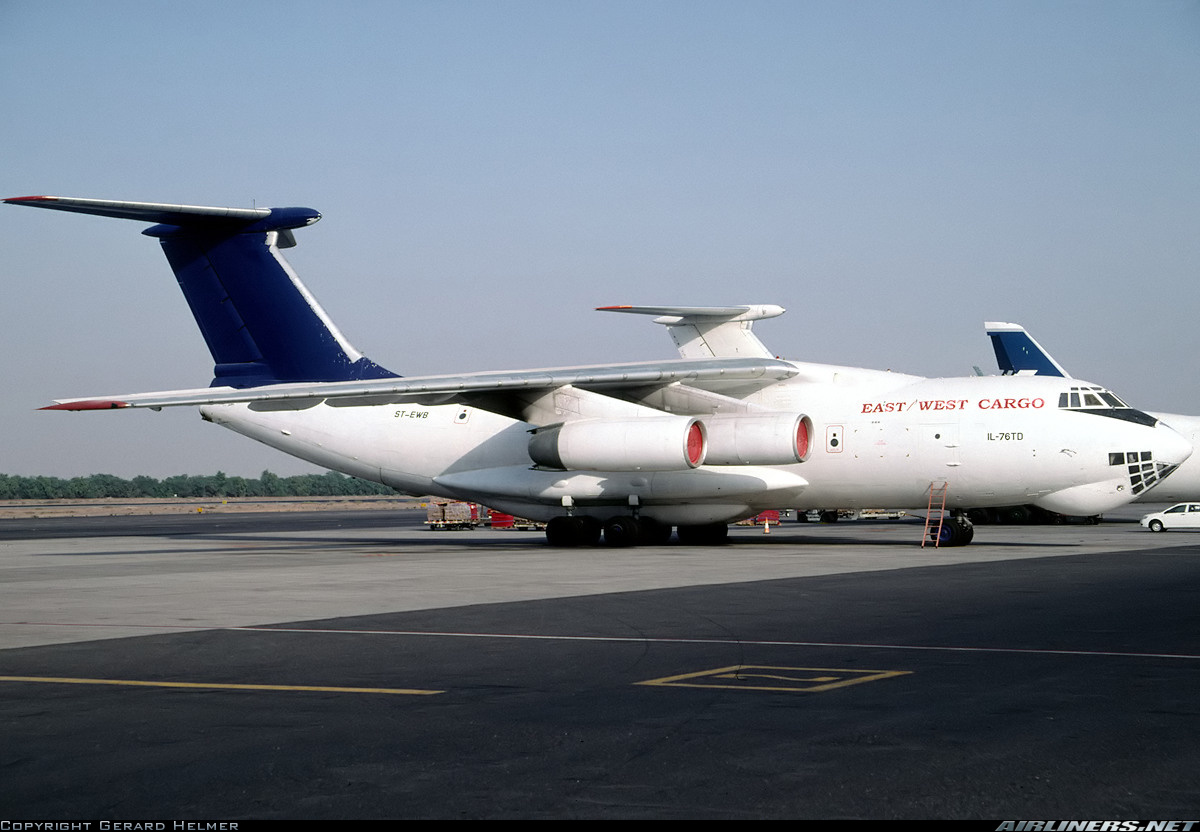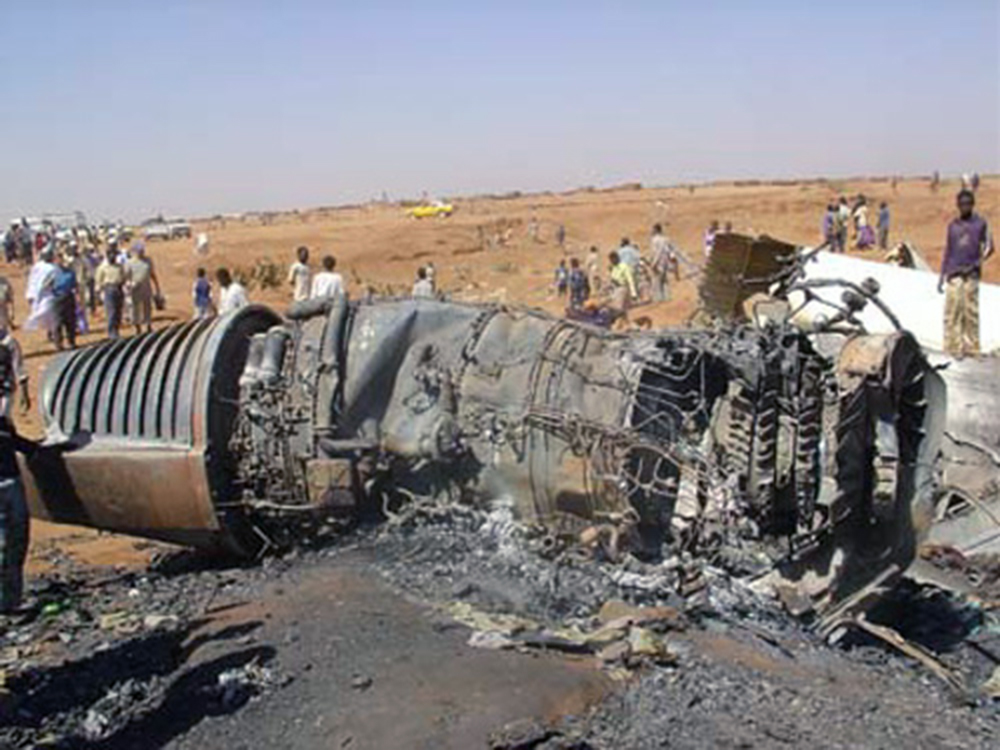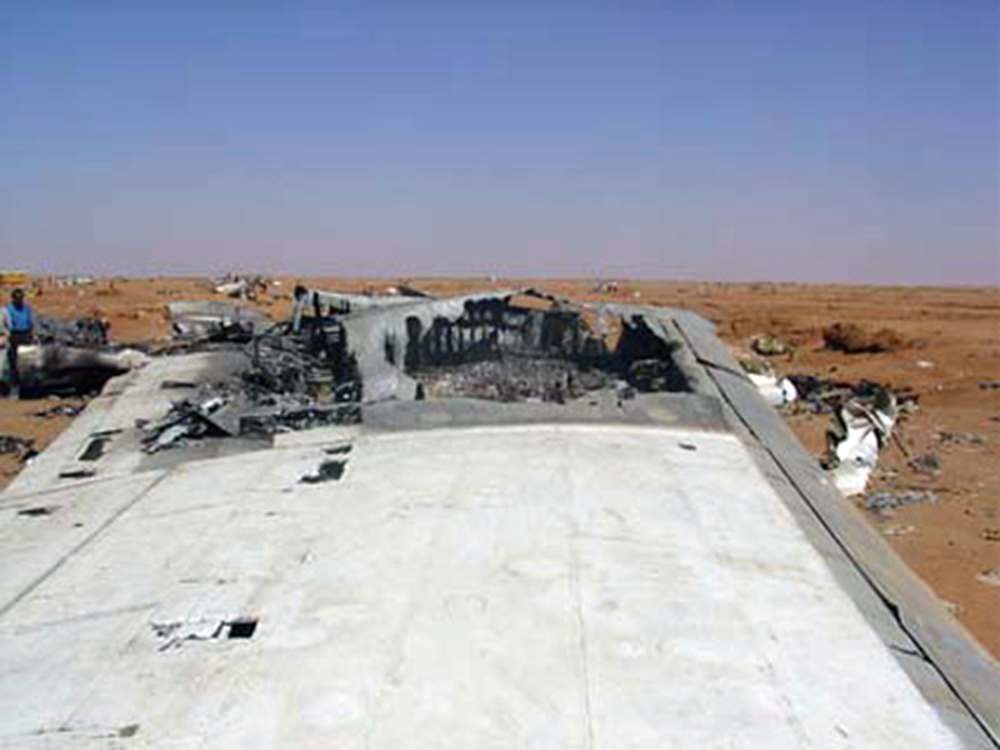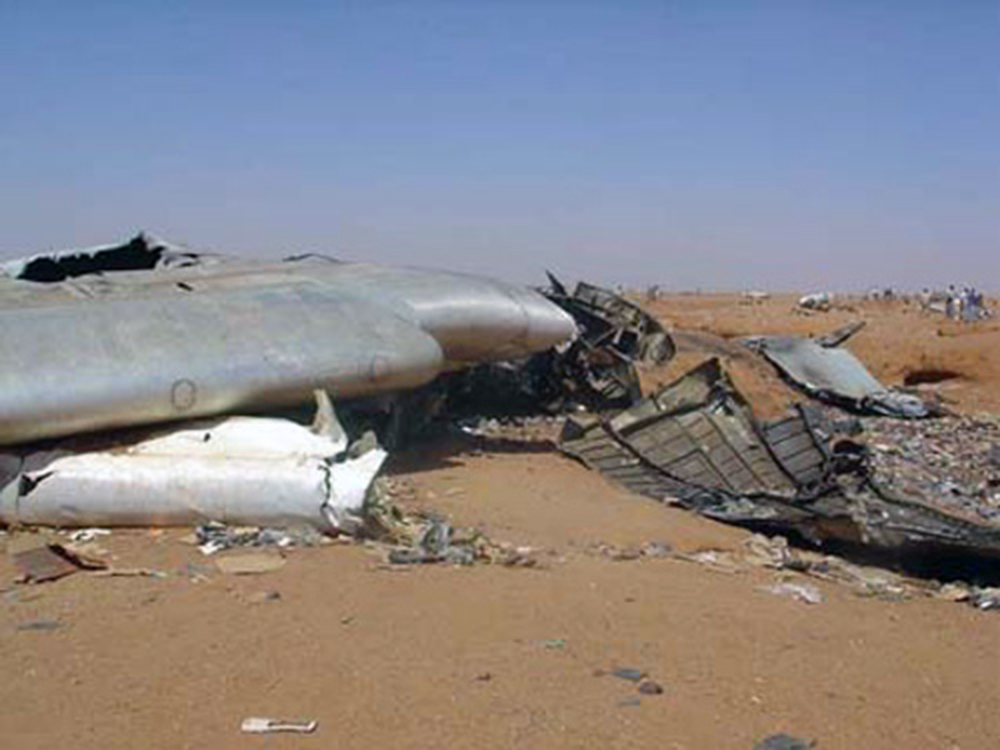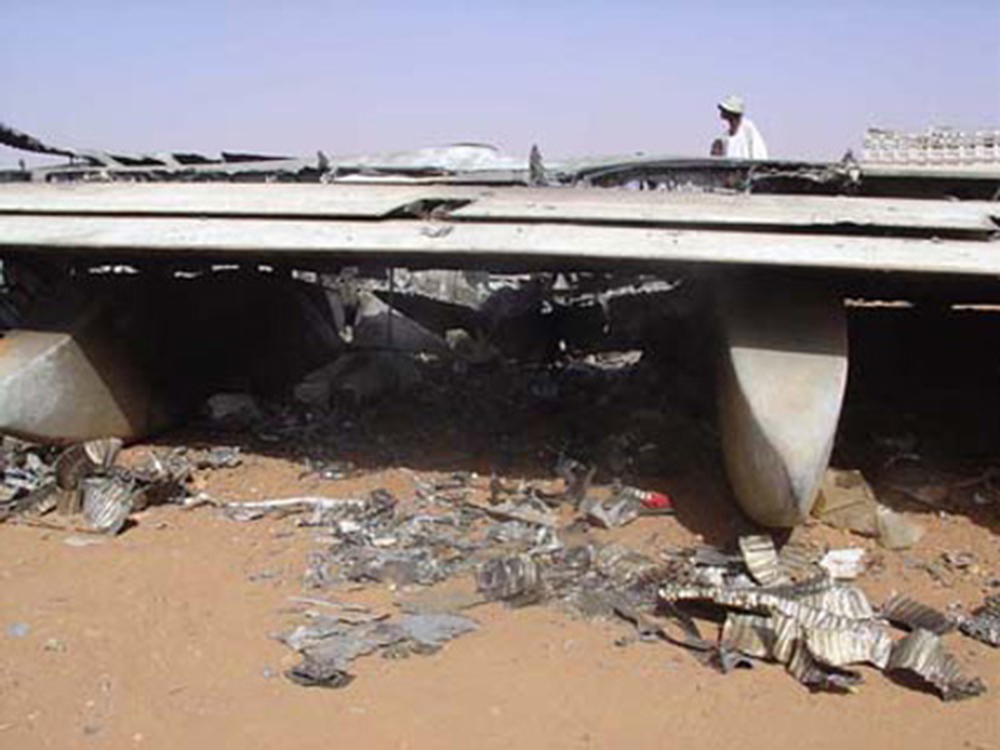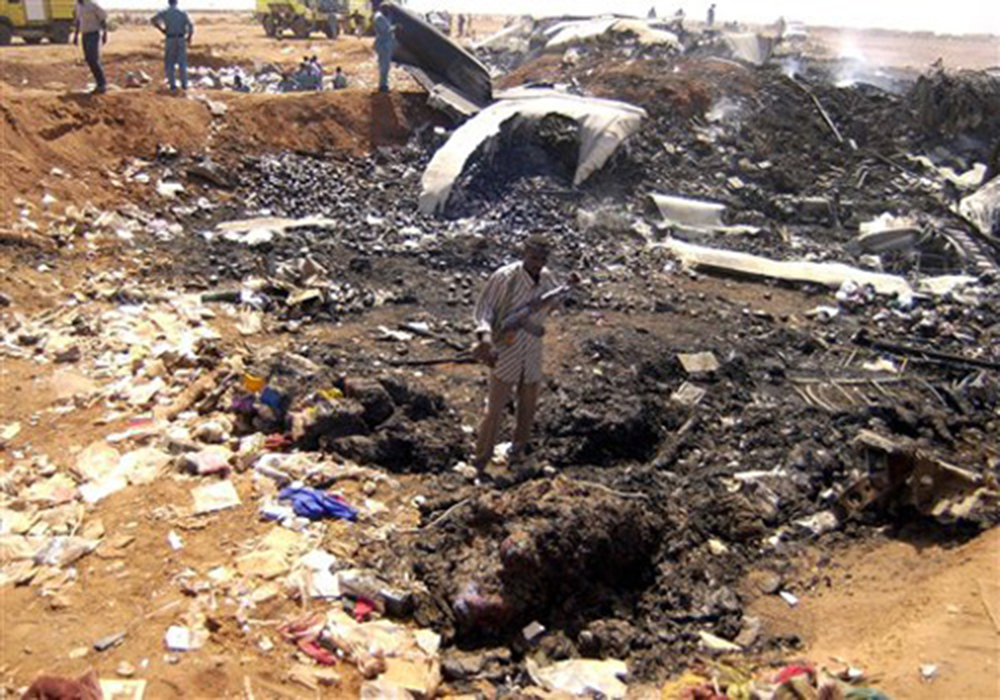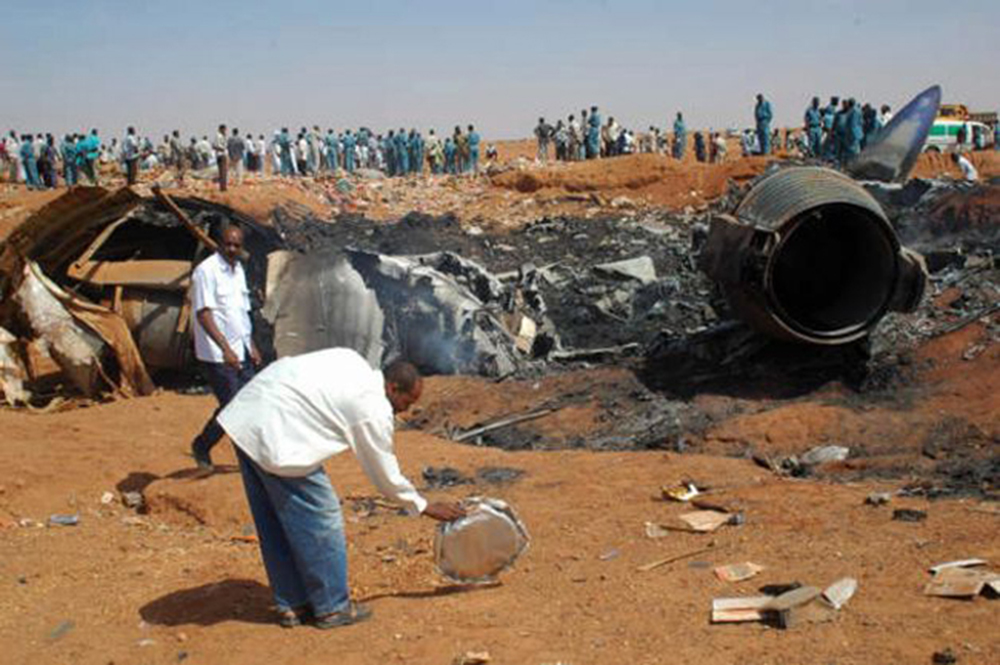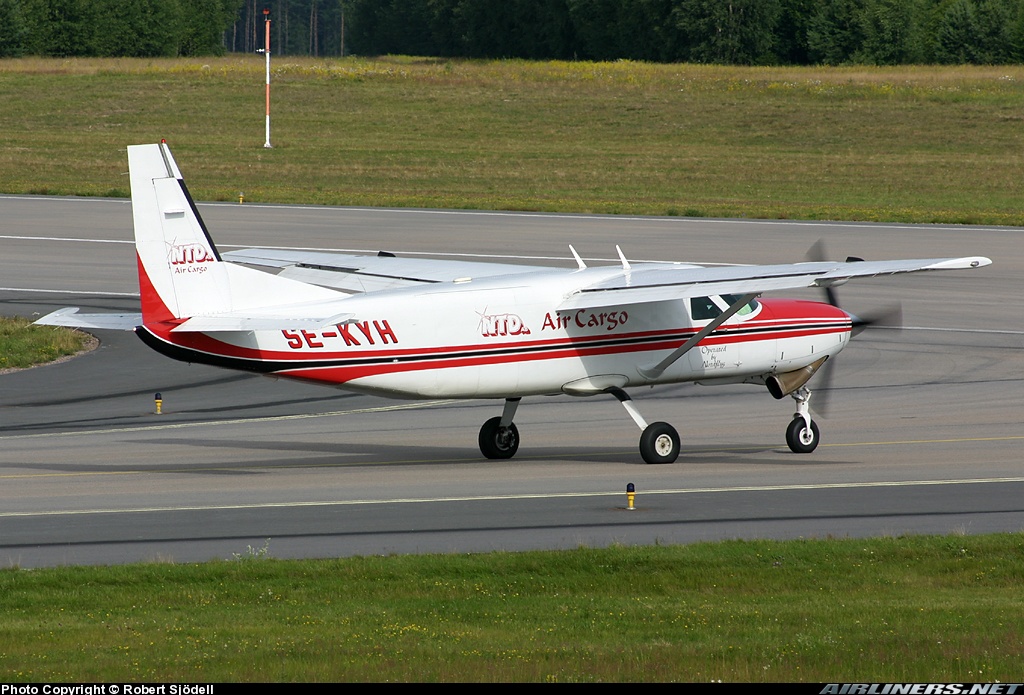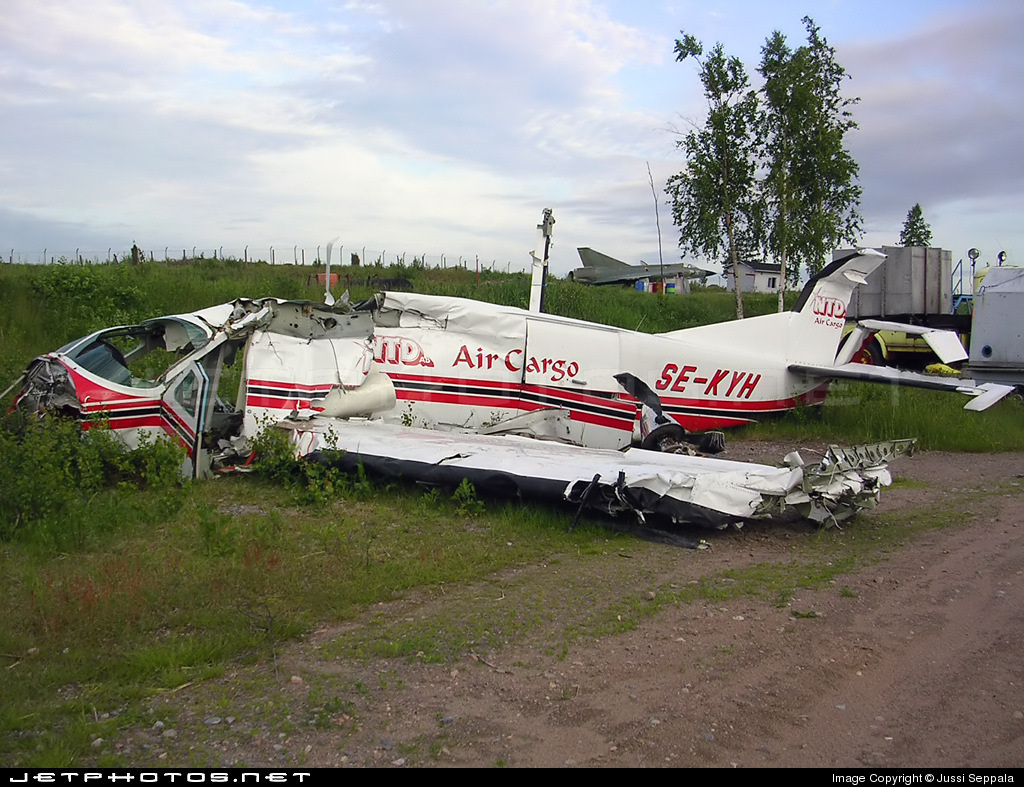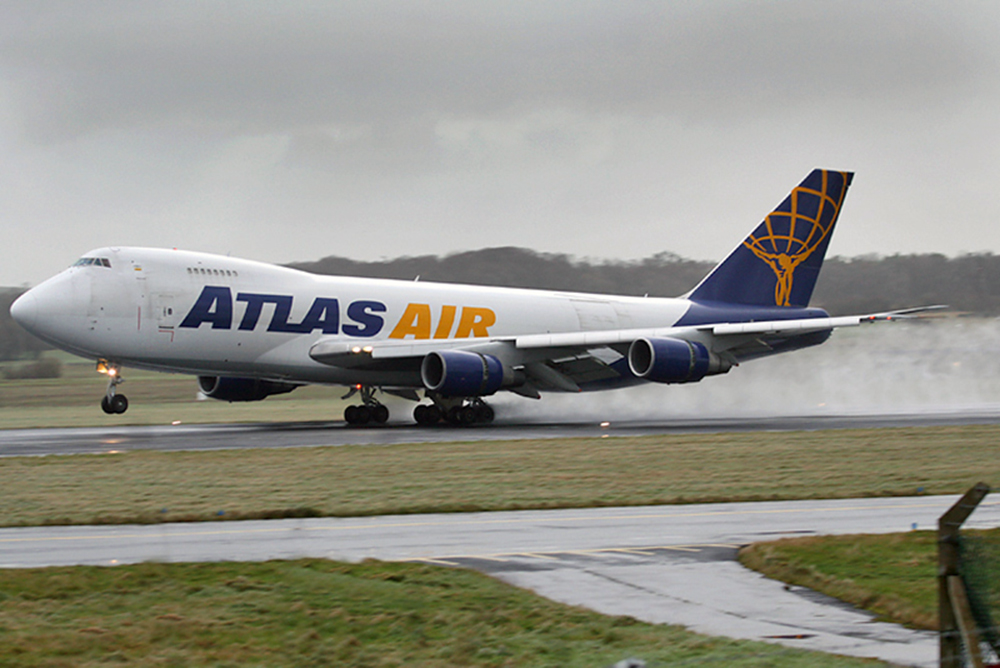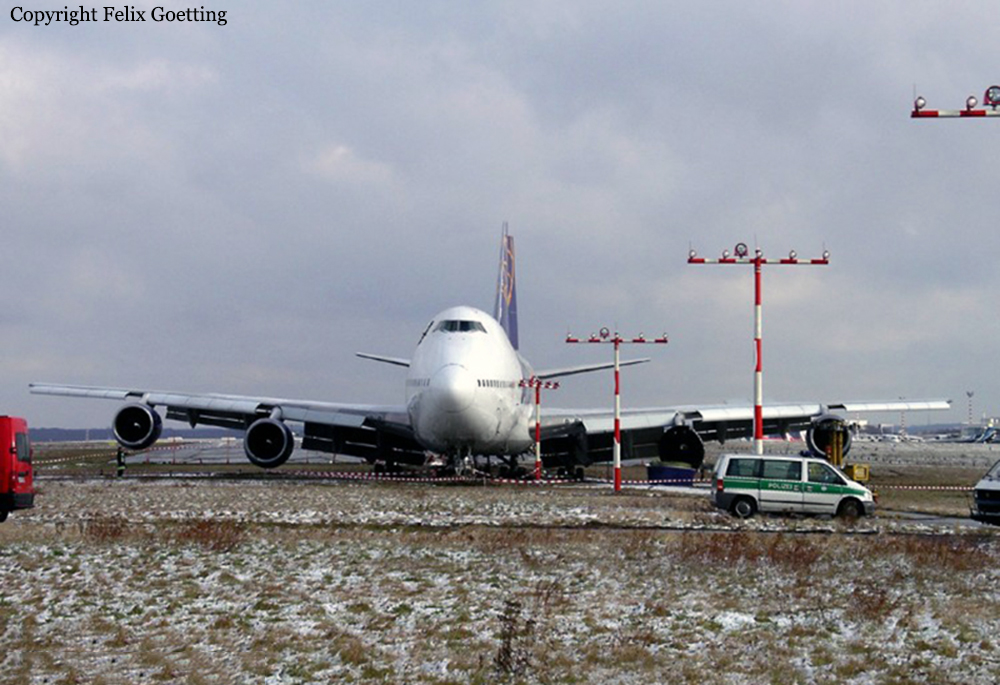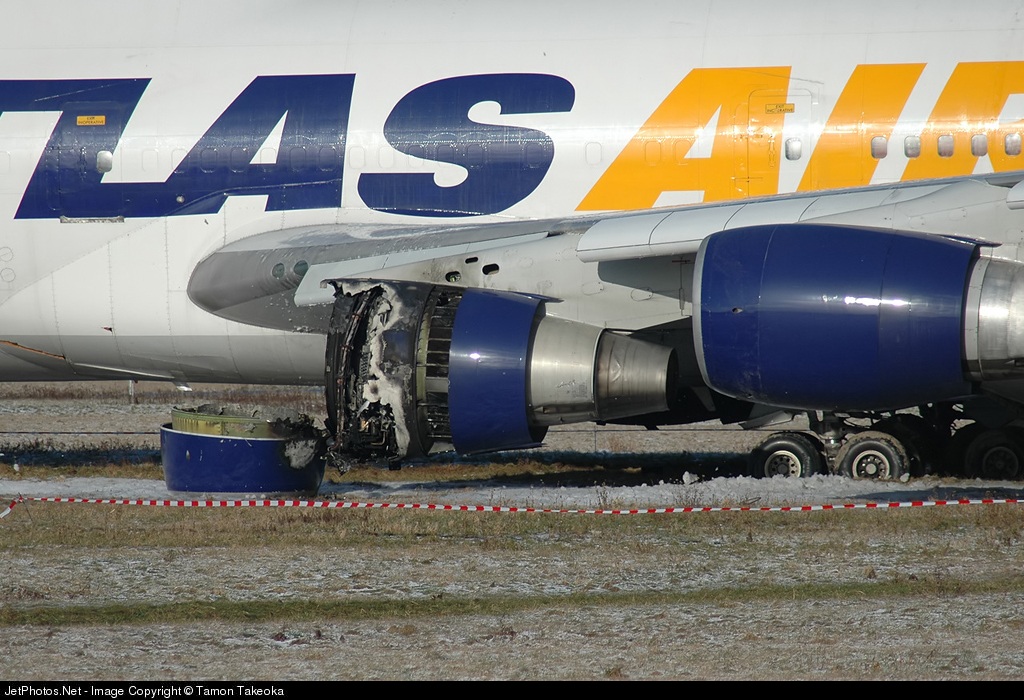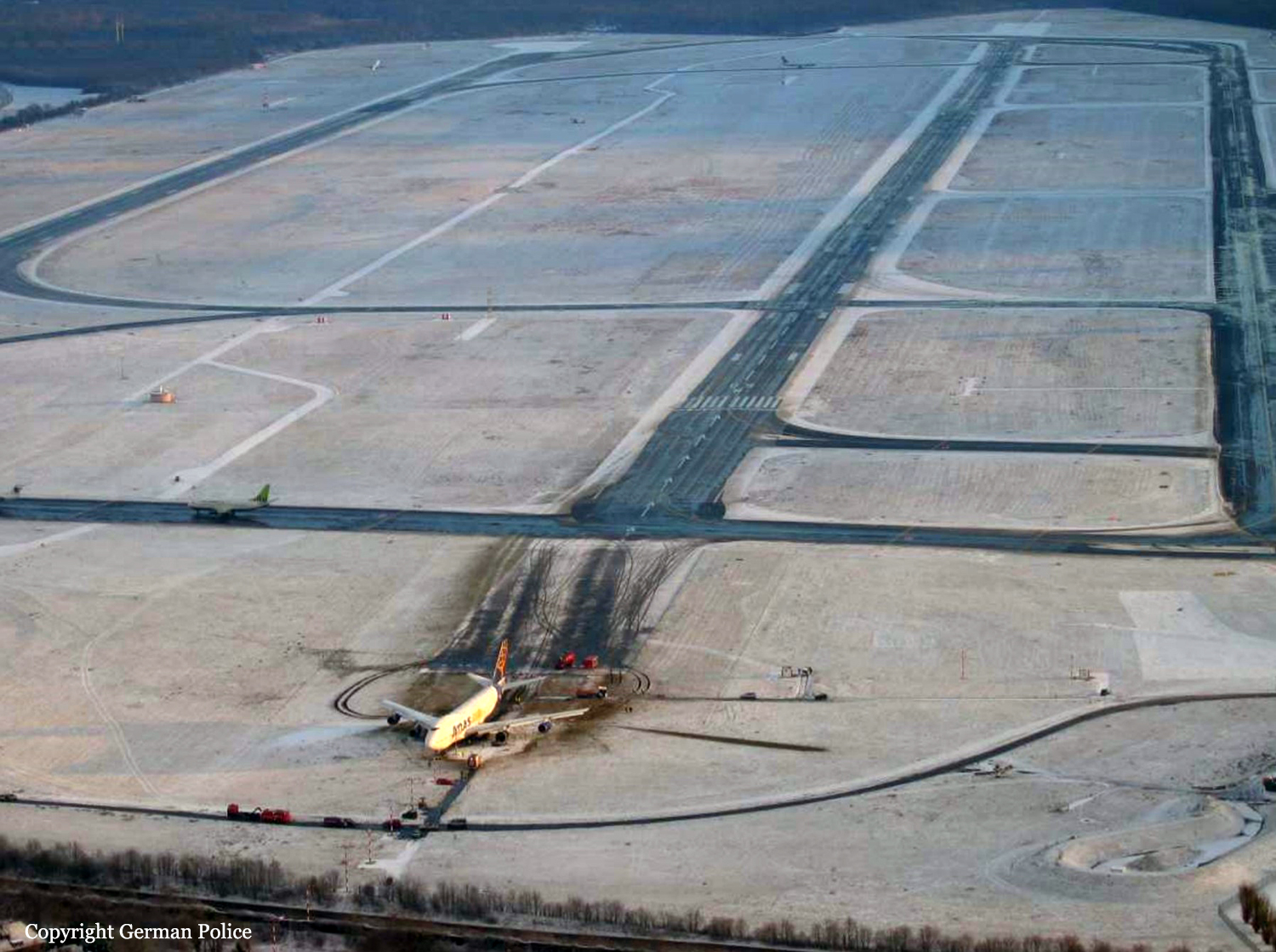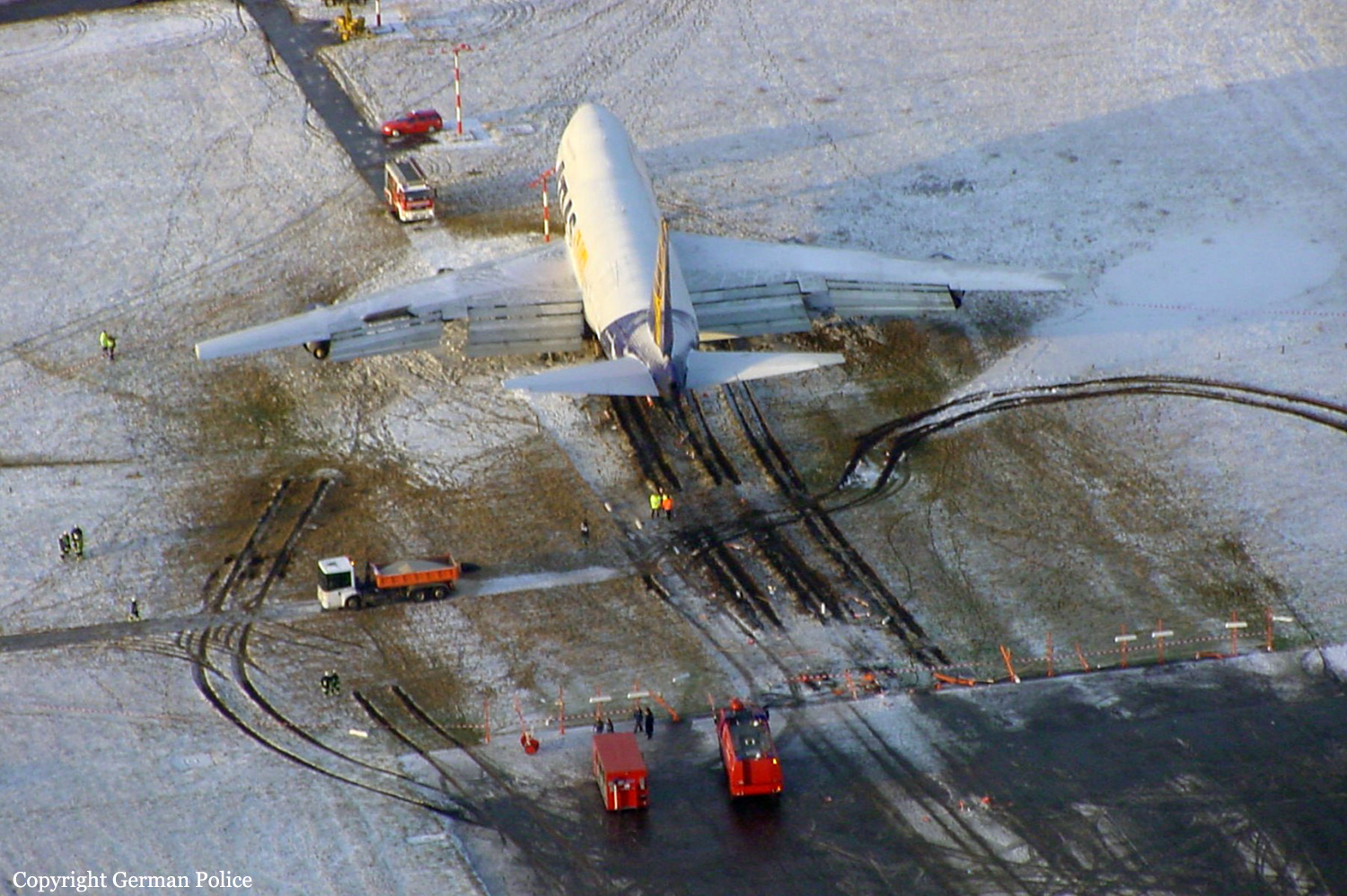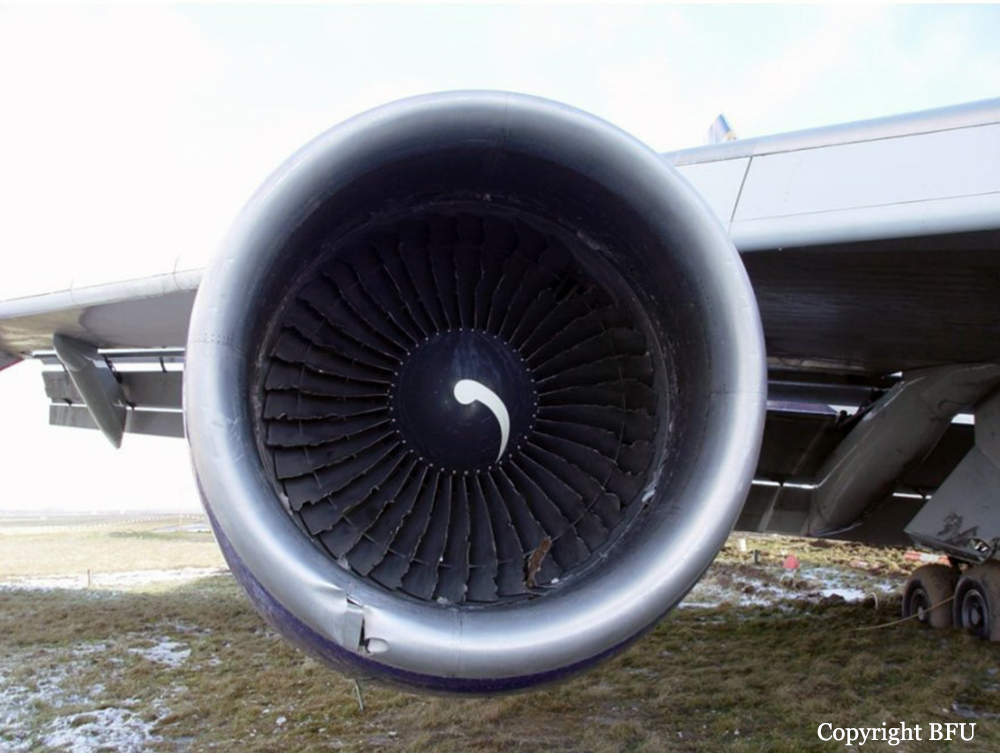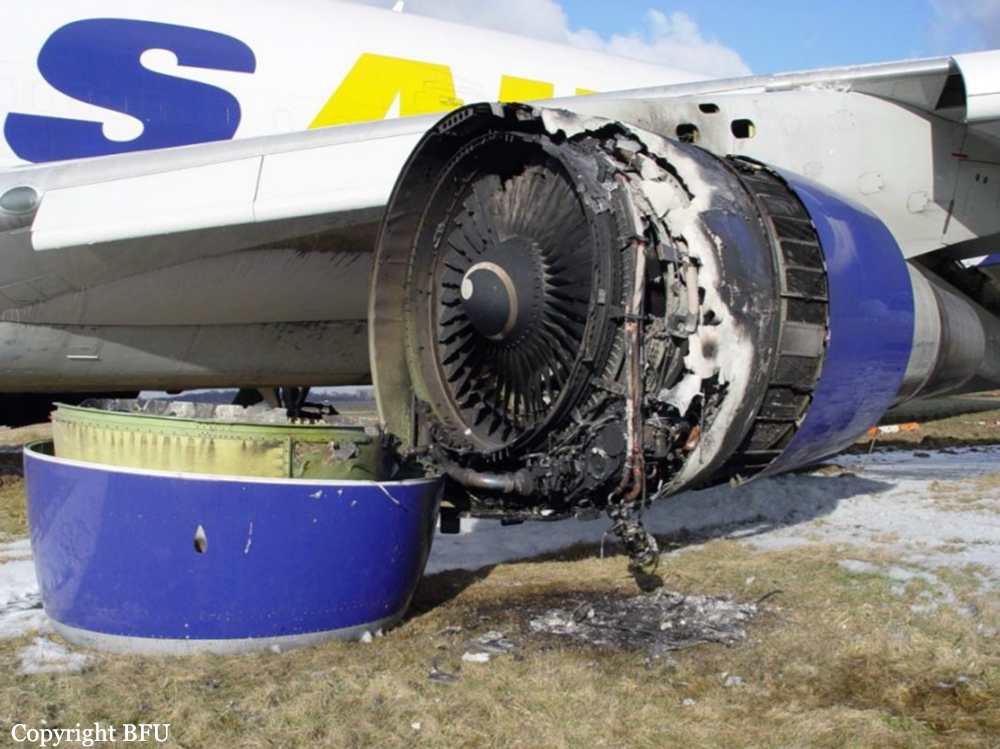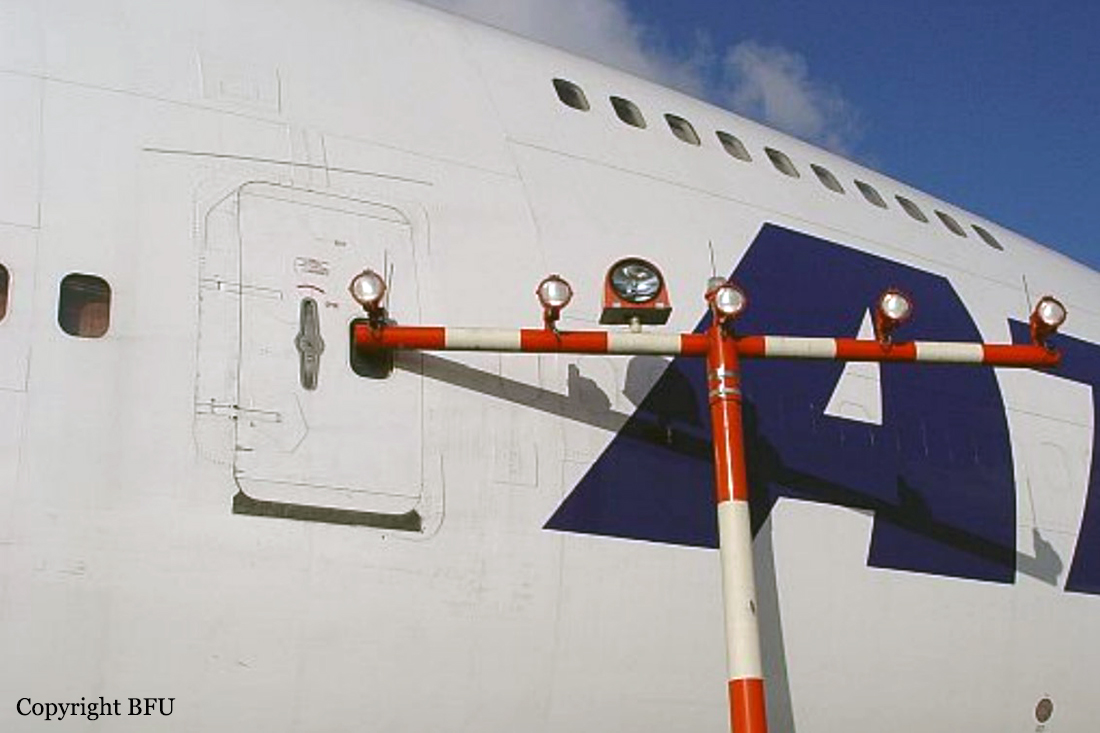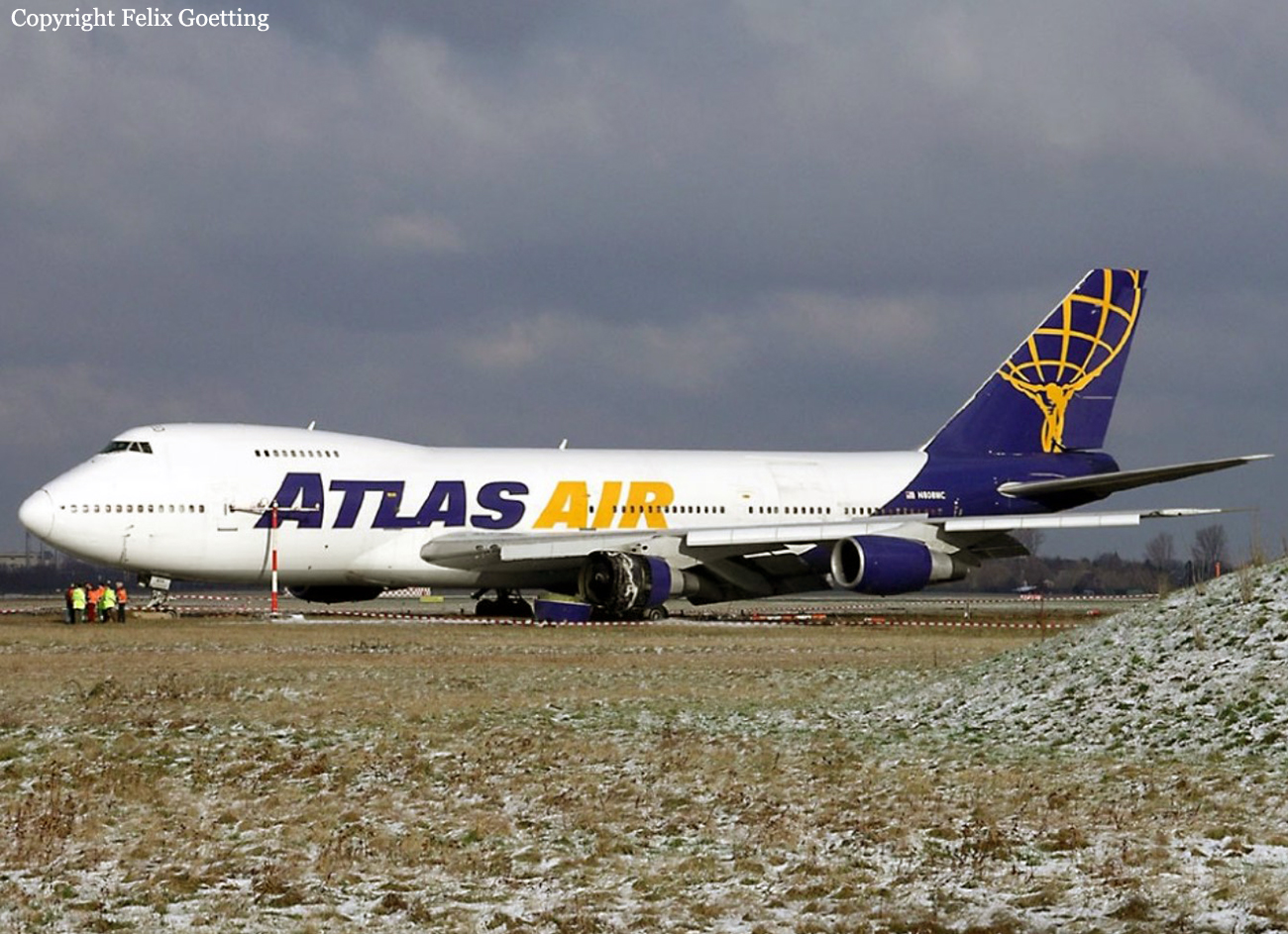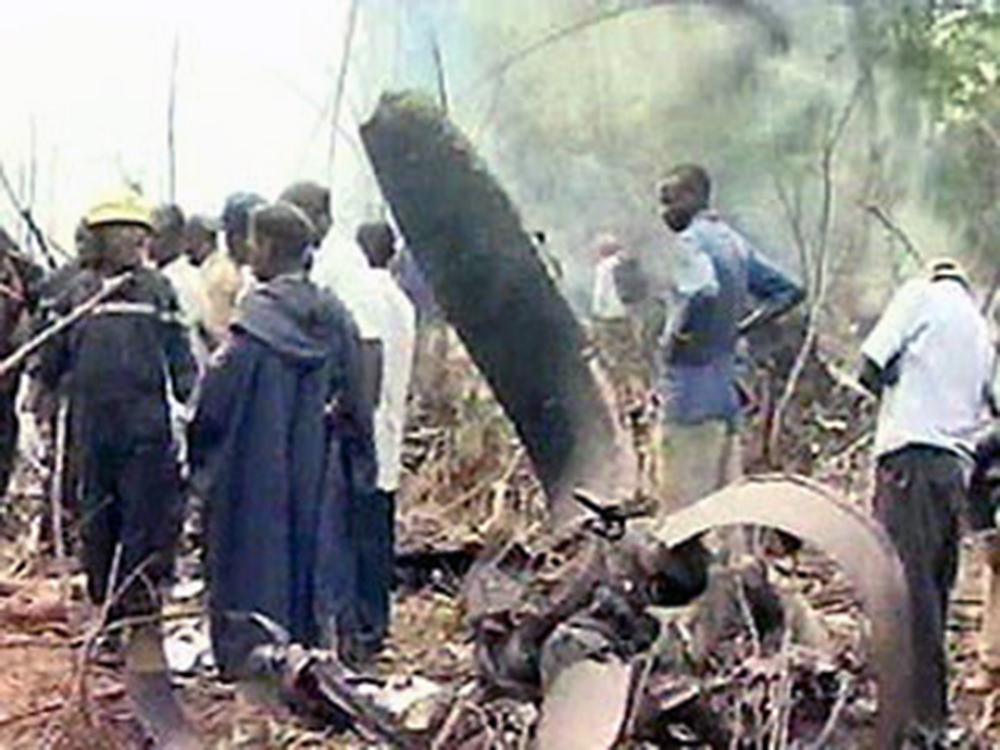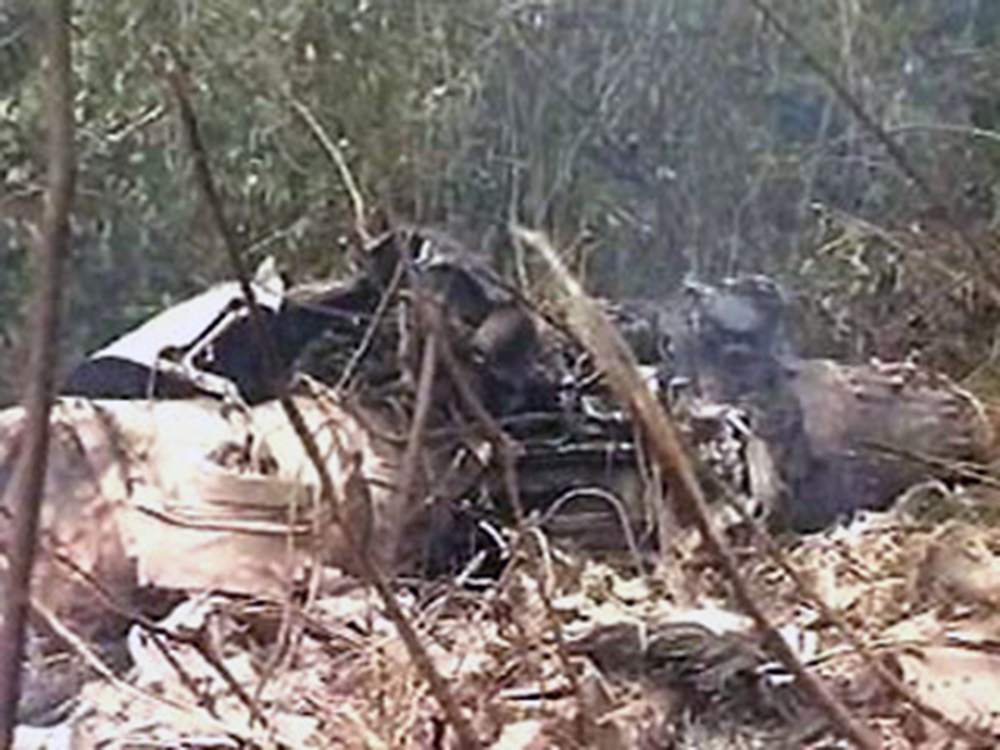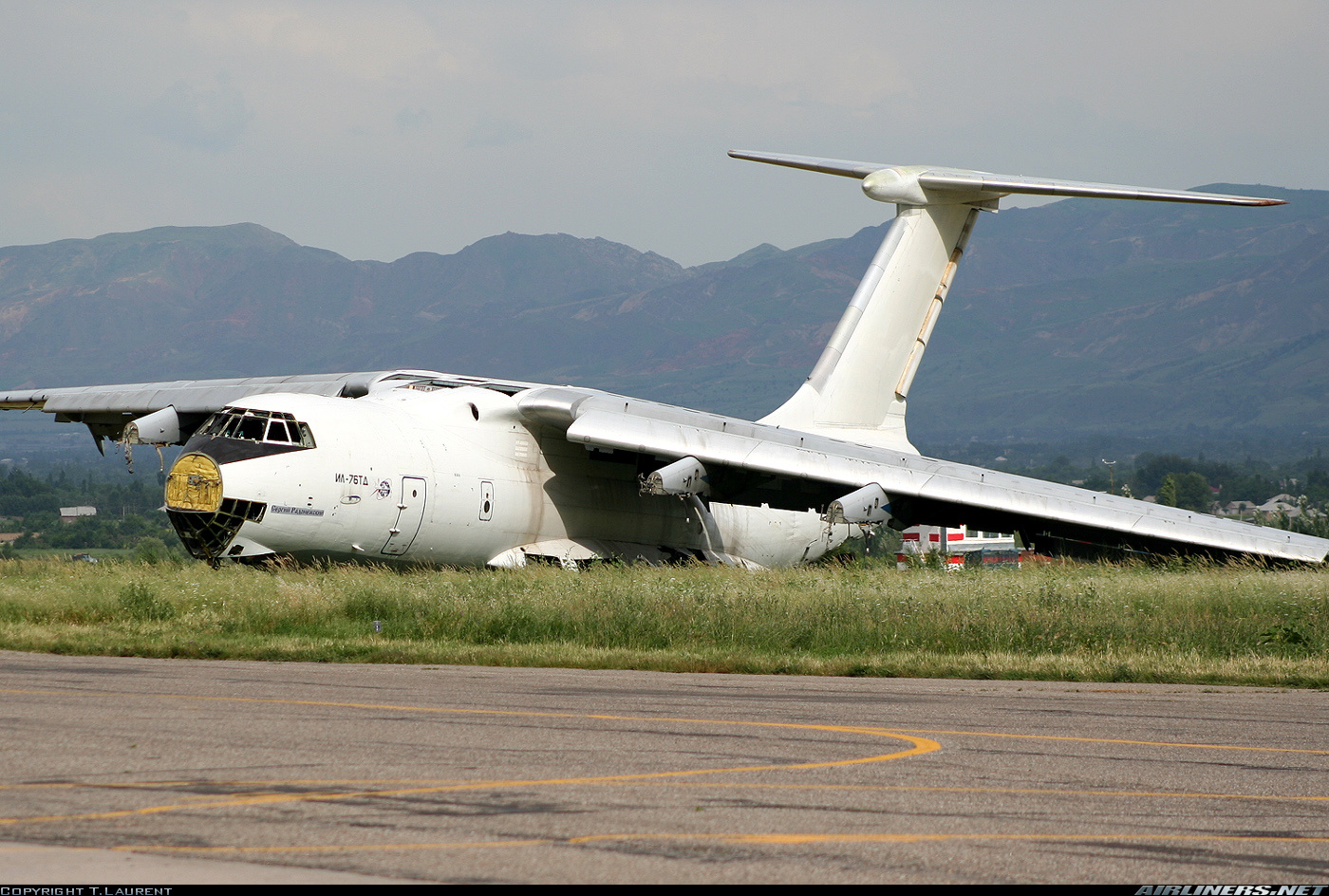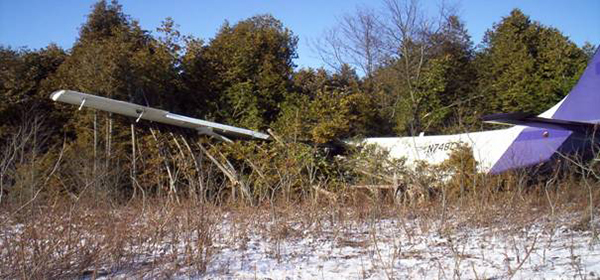Crash of an Ilyushin II-76TD in Khartoum: 7 killed
Date & Time:
Feb 3, 2005 at 0807 LT
Registration:
ST-EWB
Survivors:
No
Schedule:
Sharjah – Khartoum – Nyala
MSN:
00234 38122
YOM:
1982
Crew on board:
6
Crew fatalities:
Pax on board:
1
Pax fatalities:
Other fatalities:
Total fatalities:
7
Circumstances:
The four engine aircraft departed Sharjah Airport on a cargo flight to Nyala with an intermediate stop in Khartoum, carrying 46 tons of humanitarian aid for refugees in Darfur. On board were sisx Russian crew members and one Sudanese translator. While approaching Khartoum-Haj Yusuf Airport, the crew reported fuel issues and elected to make an emergency landing when the aircraft crashed in a desert area located 800 metres from the Ad Babkr District, about 15 km East of Khartoum. The aircraft disintegrated on impact and all seven occupants were killed.
